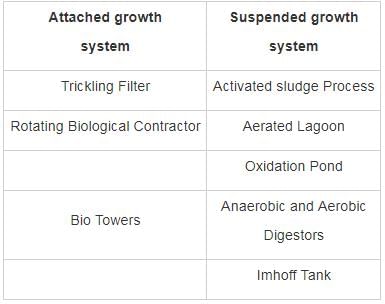Test: Environmental Engineering- 5 - Civil Engineering (CE) MCQ
10 Questions MCQ Test - Test: Environmental Engineering- 5
Which of the following biological unit process is based on a suspended growth system
1. Activated sludge process
2. Aerated lagoon
3. Rotating Biological contractors
4. Aerobic and Anaerobic Digester
The maximum efficiency of BOD removal is achieved in which of the following?
The main constituents of gas generated during the anaerobic digestion of sewage sludge are
What would be the concentration of returned sludge (in mg/l) if the sludge volume index for an activated sludge is 92 ml per gm
A conventional activated sludge treatment plant has to treat wastewater of 2250000 litres/day, having a five day BOD of 225 mg/l. The mixed liquor suspended solids concentration in the aeration tank is 2250 mg/l and concentration of biomass leaving the system is 22.5 g/m3. If the volume of the aeration tank is 225 m3, then the average time (in days) for which the biomass stays in the system will be
A sedimentation tank is treating 2 MLD of sewage per day containing 225 mg/L of suspended solids. The tank removes 30% of suspended solids. The moisture content of sludge is 98%. If the sludge is reduced to half of its volume, then the moisture content of the reduced volume sludge is –
The efficiency of a 50 m diameter and 1.5 m deep single stage high rate trickling filter based upon the data given below is _________.
Given Data:
Sewage flow = 10 MLD
Recirculation factor = 1.25
BOD of raw sewage = 200 mg/L
BOD removed in primary clarifier = 35%
For a colony of 10000 persons having sewage flow rate 250 lpcd with a BOD of 320 mg/l and organic loading of 200 Kg/day/ha, the area of the oxidation pond required for treating the sewage of the colony is _______
The activated sludge process schematic flow diagram is shown in the figure below:

where, Q, Qw = flow rate, m3/d
θc = sludge age, days
X, XR = microorganism- concentration (mixed – liquor volatile suspended solids or MLVSS)
The volume of sludge that must be wasted each day if wastage is accomplished from point A will be _________m3/day.




























